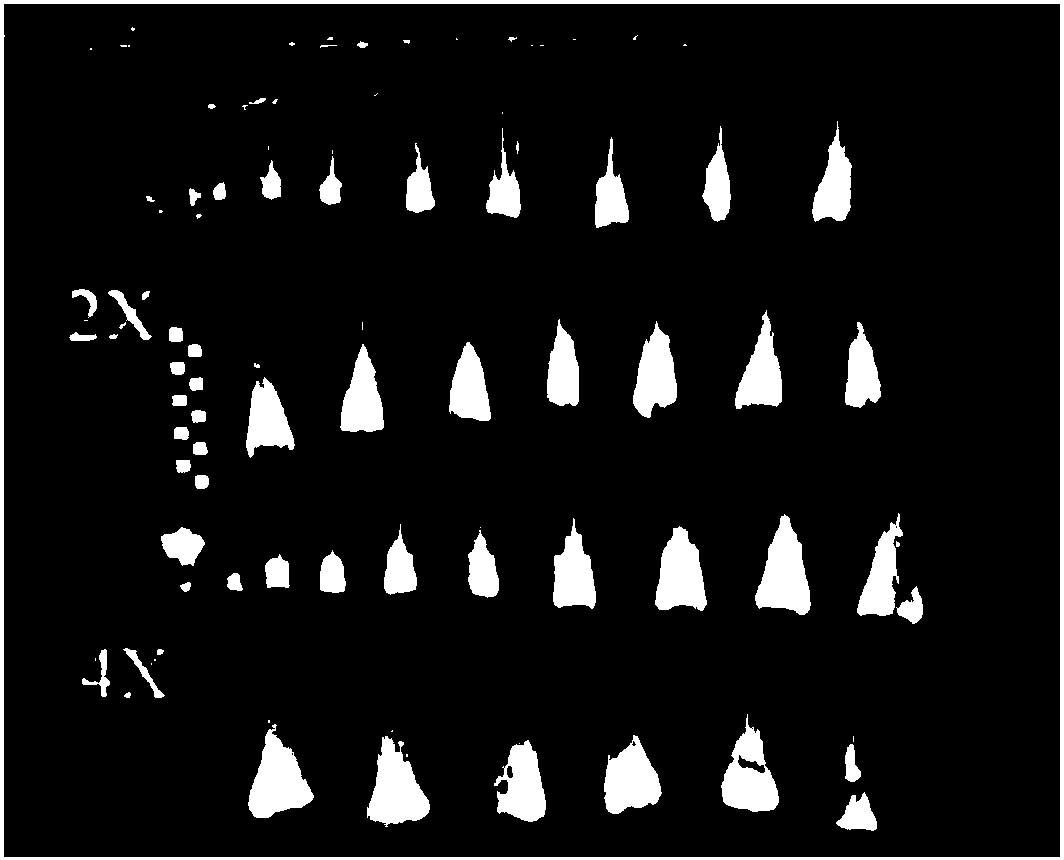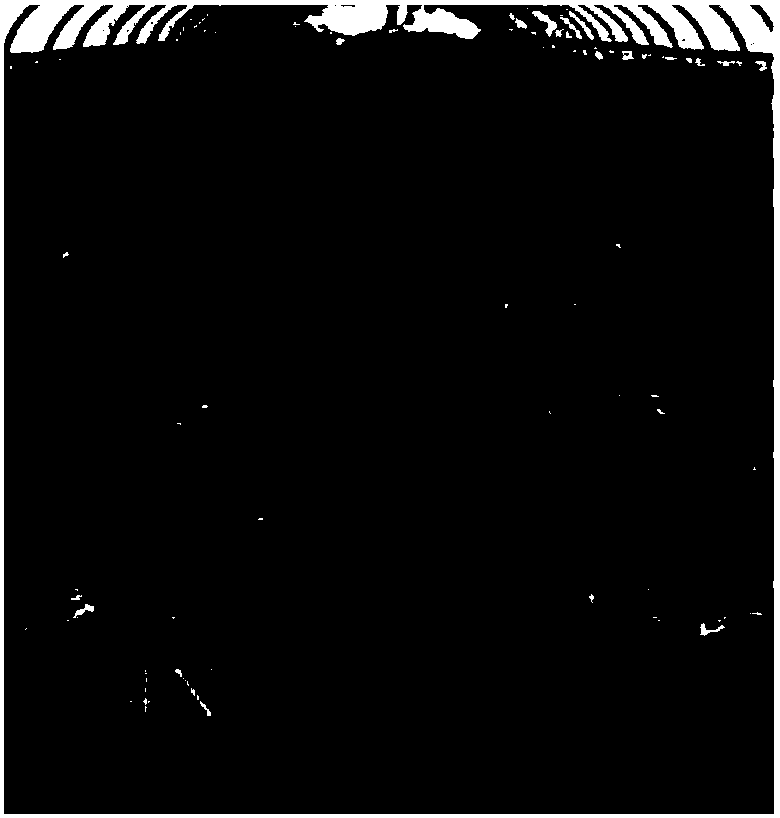Tetraploid breeding method for non-heading Chinese cabbages
A technology for head cabbage and sports, applied in the field of genetics and breeding
- Summary
- Abstract
- Description
- Claims
- Application Information
AI Technical Summary
Problems solved by technology
Method used
Image
Examples
Embodiment 1
[0030] 1. Materials and methods
[0031] 1.1 Materials
[0032] 'Dongshangwei' is diploid non-heading Chinese cabbage (commonly known as Chinese cabbage) (2n=2x=20), which comes from Japan (strain) Musang Wild Seeds Seedling Garden. On October 10, 2015, the seeds were sown in plug trays (50 holes) equipped with leafy vegetable substrates (Huai'an Chaimihe Agricultural Science and Technology Development Co., Ltd.). Put it into the artificial climate chamber and adjust the optical density to 200 μmol m -2 ·s -1 , the light hours are set to 12h·d -1 , the daytime temperature is set at (22±2)°C, the night temperature is set at (18±2)°C, the relative humidity is set at 60%-65%, and regular ventilation [10] . 1.2 Processing method
[0033] When the angle between cotyledon petiole is 40°-60°, when the first true leaf is not out, use a micro-injector to drip treatment on the growth point, twice a day, once at 7:30-8:30 in the morning, and at 3:30-4 in the afternoon :30 once, 20...
PUM
 Login to View More
Login to View More Abstract
Description
Claims
Application Information
 Login to View More
Login to View More - R&D
- Intellectual Property
- Life Sciences
- Materials
- Tech Scout
- Unparalleled Data Quality
- Higher Quality Content
- 60% Fewer Hallucinations
Browse by: Latest US Patents, China's latest patents, Technical Efficacy Thesaurus, Application Domain, Technology Topic, Popular Technical Reports.
© 2025 PatSnap. All rights reserved.Legal|Privacy policy|Modern Slavery Act Transparency Statement|Sitemap|About US| Contact US: help@patsnap.com



